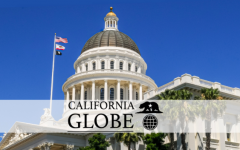
California State Capitol (Photo: Kevin Sanders for California Globe)
Globe Quiz on California Statutory Construction Principles
T or F: A general statute always applies over a specific statute
By Chris Micheli, May 1, 2023 9:44 am
This quiz is to test your knowledge about California’s principles of statutory construction.
- The purpose of statutory construction is to determine what the Legislature intended when enacting the statute in question.
- An extrinsic analysis is one in which the bill language itself is interpreted by the reviewing court.
- A general statute always applies over a specific statute.
- A more recently enacted statute is given more weight than an earlier enacted statute.
- Courts give reference to each word in a statute and qualifying words are applied to those immediately preceding them.
- The word “shall” and “must” are used interchangeably in California statutes.
- The word “may” is permissive in California statutes.
- A statute which lists specific items will prevent the inclusion of other items.
- California statutes are presumed to apply prospectively, rather than retroactively.
- The courts can presume retroactivity of a statute by implication.
- As a general rule, in reviewing the text of a statute, the courts will look to the ordinary or plain meaning.
- A statute should be read in isolation in order to understand the meaning of the words of the statute.
- A general term that follows an enumerated list of more specific terms should be interpreted to cover only “matters similar to those specified.”
- “The expression of one thing implies the exclusion of others” means that if a statute contains a list of specific items, then those items not listed are excluded.
- Courts will read a statute that renders any words or phrases in the statute meaningless if they do not impact the rest of the statute because the Legislature intended that result.
- Cognizable legislative history includes documents that courts accept as evidence of legislative history and intent.
- The Rule of Lenity is used by the courts to explain why a criminal defendant can be found guilty with less than a unanimous jury.
- A statute will be interpreted to avoid serious constitutional questions if such an interpretation is fairly possible.
- Legislative history and intent materials can only be obtained by the California Legislature.
- Courts can take judicial notice of proper legislative history materials.
How did you do? The following are the answers to this quiz:
- True – the “fundamental task is to ascertain the Legislature’s intent so as to effectuate the purpose of the statute.” Smith v. Superior Court California Supreme Court decision.
- False – that is an intrinsic analysis
- False – if a specific statute is deemed to be inconsistent with a general statute that covers the same subject matter, then the specific statute is usually deemed to be an exception to rule provided by the general statute.
- True – if two statutes cannot be reconciled and appear to be in conflict, the recently-enacted statute will take precedence over the earlier-enacted statute.
- True – the last antecedent rule provides that any qualifying words are to be applied to the words or phrases immediately preceding the qualifying word(s) and are not interpreted as extending to other words.
- False – only the word “shall” is used to mean something that is mandatory.
- True – the word “may” means the matter is permissive.
- True – this is a general rule of statutory construction.
- True – that is a general rule of statutory construction.
- False – the presumption is against retroactive application, unless the Legislature has plainly determined by express statement or other indicia that it was their intent to apply the statute retroactively.
- True – the ordinary or plain meaning is reviewed, unless the term is defined or has a specialized meaning.
- False – California courts read a statute in the context of the rest of the statutory scheme.
- True – this canon is called Ejusdem generis.
- True – this canon is called Expresio unius est exclusio alterius.
- False – the canon called Rule Against Surplusage provides that courts will avoid a reading of a statute that renders any words or phrases in the statute meaningless or extraneous.
- True – Kaufman & Broad Communities Third District Court of Appeal decision describes which materials are considered cognizable legislative history.
- False – the Rule of Lenity is a canon that any ambiguity in a criminal statute should be resolved in favor of the defendant.
- True – this canon is called Constitutional Avoidance.
- False – the California Legislative Information website provides relevant materials since 1993, the State Archives have materials prior to that date, and private vendors for a fee can gather legislative materials (e.g., Legislative Intent Service, Inc.).
- True – courts can take judicial notice of proper legislative history materials if the materials are deemed cognizable legislative documents.
Latest posts by Chris Micheli (see all)
- Family Conciliation Courts in California - July 6, 2025
- California Family Mediation and Conciliation Services - July 5, 2025
- Solemnization of Marriage in California - July 4, 2025







